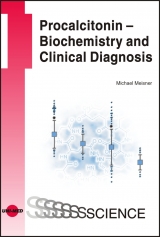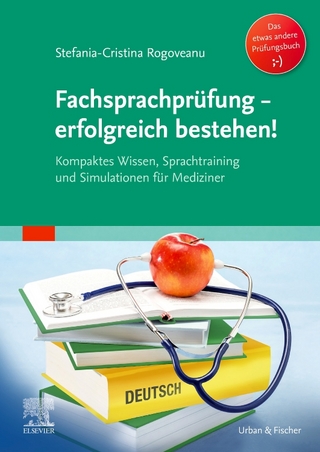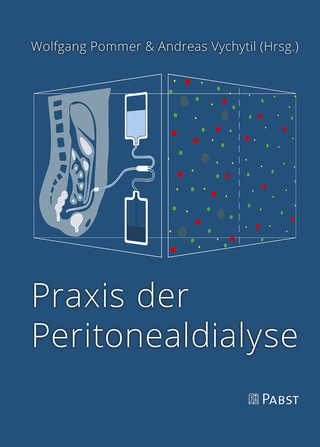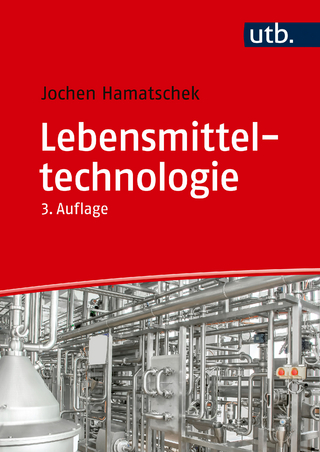Procalcitonin - Biochemistry and Clinical Diagnosis
UNI-MED (Verlag)
978-3-8374-1241-3 (ISBN)
- Keine Verlagsinformationen verfügbar
- Artikel merken
- PCT helps identify or rule out severe bacterial infections. It provides a relatively high degree of certainty in the differential diagnosis of “sepsis”, “severe sepsis” or “septic shock”.
- In conjunction with other clinical data, PCT indicates whether antibiotic therapy appears to be necessary.
- The course of PCT also reflects the efficacy of antibiotic therapy and indicates when it should be terminated. This allows a “patient-adapted, individual” antibiotic treatment of generally shorter duration than in conventional procedures.
- PCT offers a risk assessment in patients with sepsis in respect of organ failure and mortality, thus high-risk patients are quickly identified to receive optimum treatment.
In order to ensure a qualified application of this parameter in the hospital as well as in the medical practice, fundamental knowledge of PCT is essential. This monograph overviews the most important areas of application and defines the special properties of PCT.
1. Basic information 9
1.1. Procalcitonin, a marker protein for infection and sepsis 9
1.2. Properties of PCT 10
1.3. Diagnosis of severe bacterial infections and sepsis 10
1.4. PCT and severity of disease 10
1.5. Non-bacterial causes of elevated PCT levels 12
1.6. Prognostic significance and evaluation of the progression of sepsis 12
1.7. Influence on diagnostic and therapeutic decisions during the clinical visit 14
1.8. Indication and monitoring of antibiotic therapy 15
1.9. Stability and kinetics of PCT 15
1.10. An overview of biochemical properties 16
2. Primary indications 17
2.1. Diagnosis, progression evaluation, and therapy of bacterial infections and sepsis 17
2.1.1. Diagnosis of sepsis, severe sepsis, and septic shock 17
2.1.2. Differential diagnosis of severe bacterial infection and sepsis 19
2.1.3. Evaluation of the severity of sepsis and the systemic inflammatory reaction 22
2.1.4. Progression and prognostic significance 23
2.1.5. Indication and control of antibiotic treatment 25
2.2. PCT level measurement in specific clinical areas 26
2.2.1. PCT in the intensive care unit 26
2.2.2. PCT in the emergency room 27
2.2.3. PCT in outpatient cases 30
3. Biochemistry, pathophysiology 33
3.1. Procalcitonin (PCT), a soluble protein 33
3.2. Genetics 34
3.3. Mechanisms of induction and elimination of PCT 35
3.4. Time behavior of induction and elimination 36
3.5. Biological effects of PCT 36
4. Laboratory chemistry 39
4.1. Methods of PCT level measurement 39
4.2. Stability and half-life in vitro, preanalytical factors 39
4.3. Normal values and reference ranges of PCT 39
5. PCT as a marker of infection and sepsis: an evidence-based collection of data 40
5.1. Differential diagnosis of bacterial infections: SIRS and sepsis 40
5.2. PCT as a marker of the progression of infection to sepsis, severe sepsis and septic shock 45
5.3. Interpretation of PCT in the clinical context 46
5.4. PCT: a marker of infection or of inflammation? 46
5.5. Comparison with other markers 48
6. Use of PCT for the control of antibiotic therapy 52
6.1. Basics of an individual, patient-adapted antibiotic treatment using PCT 52
6.2. PCT-controlled antibiotic therapy in airway infections 57
6.2.1. Overview of current studies 57
6.2.2. Patients with suspicion of infections of the upper airways in the emergency room: the "ProResp" study 58
6.2.3. PCT, antibiotic therapy, and exacerbation of COPD: the "ProCOLD" study 59
6.2.4. Outpatients with suspicion of airway infections: the "PARTI" study 60
6.2.5. Individual, patient-adapted treatment of community-acquired pneumonia with PCT: the "ProCAP" study 60
6.3. Control of antibiotic treatment in patients in intensive care with sepsis, severe sepsis and septic shock 62
7. Use for special indications 65
7.1. Diagnostic use of PCT in patients with pneumonia 65
7.2. Bacteremia 67
7.3. Bacterial endocarditis 68
7.4. Acute bacterial meningitis 69
7.5. Differential diagnosis of viral diseases 71
7.6. Fungal diseases: Aspergillus and candida infections 72
7.7. Autoimmune diseases 73
7.8. Allergic diseases 74
7.9. Pancreatitis 74
7.10. Vesicourethral reflux, pyelonephritis, and urinary tract infections 76
8. Exceptions and special cases 79
8.1. PCT induction without indication of a bacterial focus 79
8.2. Induction of PCT after surgical interventions and trauma 81
8.3. PCT after organ transplantation 85
8.4. PCT in renal insufficiency 86
8.5. Tumor illnesses 87
8.6. Hematological/oncological illnesses, chemotherapy 88
8.7. PCT in patients with leukopenia 90
8.8. Bone marrow transplantation and transplantation of hematopoetic stem cells 91
9. Children and newborns 92
9.1. Measuring PCT levels in children 92
9.2. The first days after birth: diagnosing newborn sepsis 93
9.3. Infants (>3 days), toddlers and children 97
10. Frequently asked questions 103
11. Literature 106
Index 123
| Erscheint lt. Verlag | 7.12.2010 |
|---|---|
| Reihe/Serie | UNI-MED Science |
| Zusatzinfo | 62 illustrations |
| Sprache | englisch |
| Maße | 170 x 240 mm |
| Gewicht | 360 g |
| Einbandart | gebunden |
| Themenwelt | Medizin / Pharmazie ► Medizinische Fachgebiete |
| Schlagworte | bacterial infection • Infektion / Infektionskrankheiten • Procalcitonin • Procalcitonin (PCT) • Sepsis • Sepsis / Blutvergiftung |
| ISBN-10 | 3-8374-1241-5 / 3837412415 |
| ISBN-13 | 978-3-8374-1241-3 / 9783837412413 |
| Zustand | Neuware |
| Haben Sie eine Frage zum Produkt? |
aus dem Bereich




